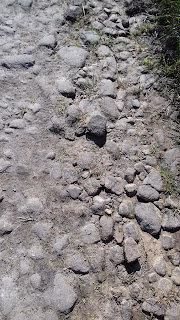From my earliest writings, I’ve had a fascination with
names. I collect them, make lists, and pore through them, relishing the sounds
they make and imagining the characters they will be – hopefully one day.
Alisaundre, Odierna, Laureola,
Hierytha, Pertesia, Mariamne, Jesmaine
How they roll around the tongue!
Most of them are still waiting, not yet crossed out. They
are too obscure to use, outlandish even some of them: Salathiel, Baldassare, Theldry, Gerente, Jurdi, Odinel, Sagard, Teague,
Jolenta, Truffeni. Also out of period, unsuitable for the time.
 My bible for historicals is The Oxford Dictionary of English Christian Names by E.G.
Withycombe, of which I now have a second copy by my bed. The other lives above
the PC with the writing related books.
My bible for historicals is The Oxford Dictionary of English Christian Names by E.G.
Withycombe, of which I now have a second copy by my bed. The other lives above
the PC with the writing related books.
Elizabeth, for
example, has a whole page of history. We learn its origin from Hebrew Elisheba,
and how it travelled across Russia and Europe to England via France (where it
became Isabel) and only became hugely
popular after the Tudors – for obvious reasons. It has more diminutives than
any other name: Betsy, Betty, Bess,
Eliza, Beth, Lizzy, Tetty, Tetsy, and a host more in other languages. But
no surnames, strangely enough.
Withycombe makes for fascinating reading. I can get lost in
there for hours. It’s my first port of call when I’m looking for names for a
new hero or heroine. I tend to flick through first, avoiding letters recently
used so you don’t get George immediately followed by Gerard in the next book.
If a particular name doesn’t jump out at me, I have to go more in depth and
pick up a version of the name within the definition.
Dowsabel from Dulcie perhaps. Gatty from Gertrude. Meriel from Muriel. Fillida from Phyllis.
There are endless possibilities; you get spoilt for choice.
Although, as most writers discover, characters can be recalcitrant about names.
They refuse to have the one you give them and insist on something else.
Annoying, but it’s no use fighting it. You just have to give in and accept
she’s going to be Caroline and not your preference of Cleome or Chloe.
I have other books of names, but Withycombe is my
inspiration. I must have combed it a hundred times, building my pleasurable
lists. You can see how well-worn it is.
One list I derived from Italian tombstones on a visit to
Florence. I’ve only used one name from it, but I still love them.
Iole Lovisoni, Aida
Lorenzini, Ofelia Zocchi-Lumachi, Dionisia Corti-Guidicci, Euridice Casini,
Ezio Mangianti.
Can’t you just see the medieval pageant of gorgeously-clad
veiled women passing before your eyes?
My French list has yielded names I have been able to use,
but others are still waiting.
Hilaire, Gaspard,
Eulalie, Hippolyte, Ignace, Venise, Celine.
The modern lists carry names I doubt I’ll ever use, but
simply cannot resist putting them in.
Azor, Bete, Botolf,
Cyr, Jago, Levin, Udo, Ita, Floy, Bovo, Varvara, Kaeso, Dukana.
When it comes to lesser characters and I need a name fast, I
go to the lists for specific centuries in The
Guinness Book of Names by Leslie Dunkling. This one is also my go-to book
for quick surnames when I run out of the lists I’ve made of usable place names
I take from maps. Lists again, see. Can’t stop making them.
Just to prove there is a point to my obsession, here are
some of the more obscure names picked out of the lists that I have managed to
use, though not necessarily for the main characters.
Frideswid (the
heroine from Friday Dreaming). The entry shown above for this states that Friday is a diminutive.
Berinthia (the
cousin come companion/duenna in Fated Folly)
Hebe (the aunt
from Seventh Heaven)
Melusine (my
French/English heroine from Mademoiselle at Arms). You can see the arguable French version under the Millicent
entry, which is where I got it..
Mairenni and Peneli (the gypsy matriarch and her son
from An Angel’s Touch)
Maidie (the
heroine Lady Mary Hope from Misfit Maid). The first illustration shows this was a diminutive for Mary.
And to prove the usefulness of Withycombe, my current Brides
by Chance series features these adorable lovelies:
Isolde, Marianne,
Edith, Apple (from Appoline), Lily (from Liliana), Delia, Chloe, and in the work in progress, Felicity. Waiting in the wings, we have twins
Hetty (from Henrietta) and Sylve (from
Sylvestre, the feminine form of Silvester).
I can’t think where you get the idea that the naming of names
is my delight and my passion!
Elizabeth Bailey








































